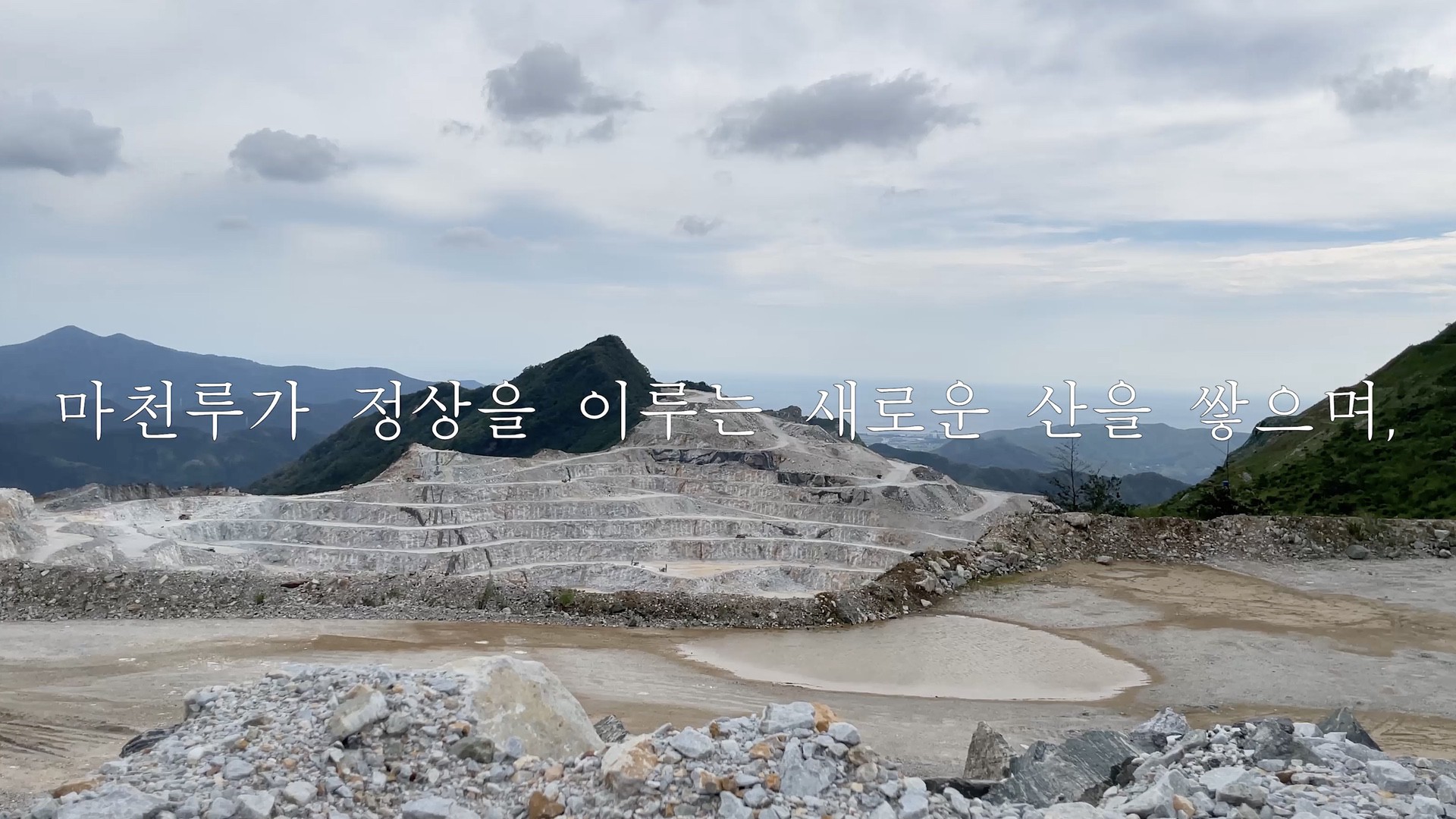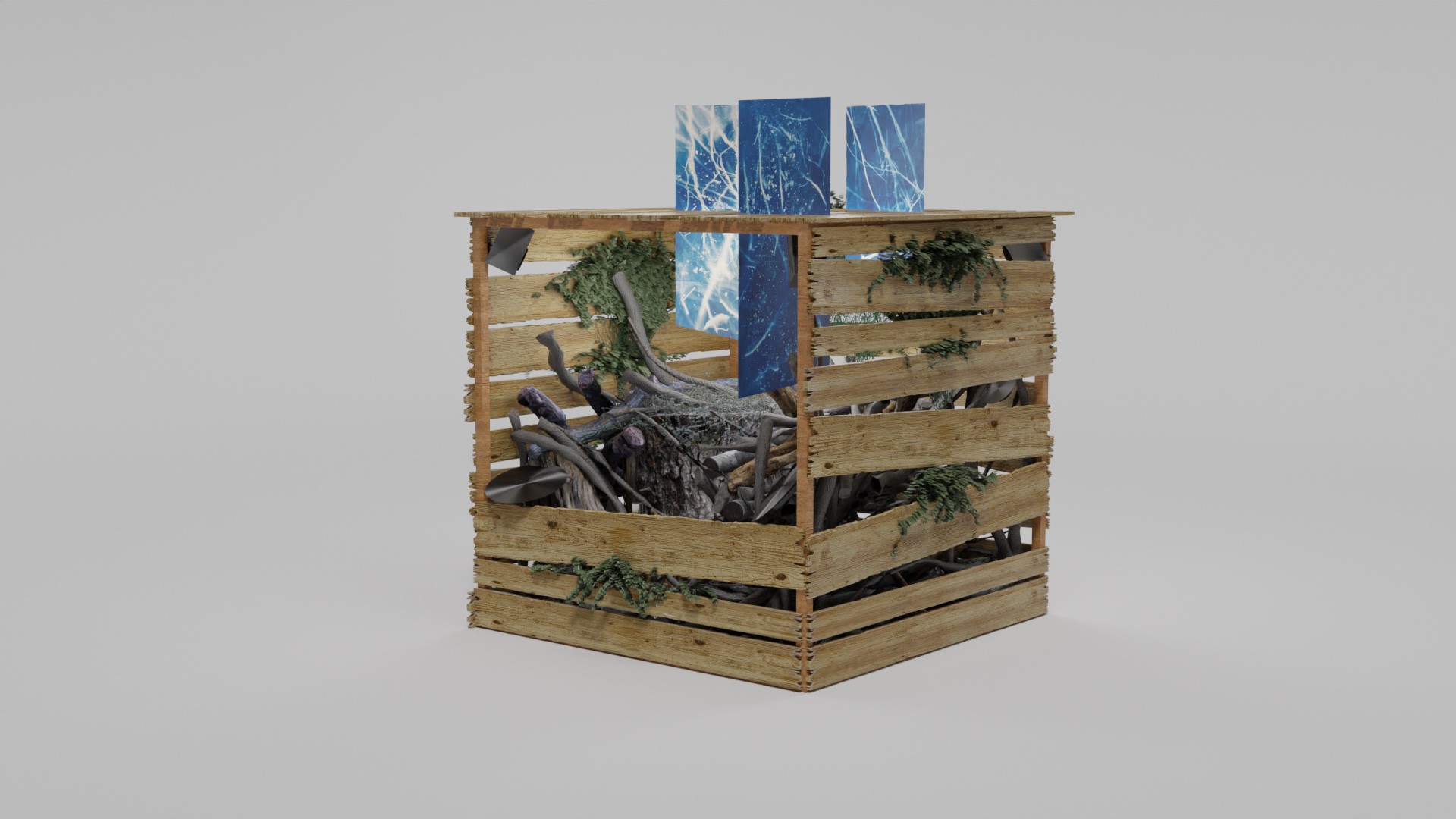
City of Gaia
Soyo Lee

〈Aeginetia Indica, Somewhat like Mushrooms〉, 2022-2023.
Plant preserves, text, single channel video, dimensions variable.
Courtesy of the artist.

〈Buxus microphylla〉, 2018-2023.
Plant preserves, text, single channel video, dimensions variable.
Courtesy of the artist.
Lee Soyo presents Aeginetia indica, somewhat like mushrooms and Buxus microphylla from the Feral in Seoul series (2017-) in which she focuses on how plants that have been domesticated for human purposes also have the ability to propagate in the wild and build a new biotope.
In Aeginetia indica, somewhat like mushrooms, Lee explores the plants known in Korean as yago growing in the silver grass planting area at Sky Park on Nanji Island. Yago (野菰; Aeginetia indica L.) is a root parasite of silver grass, which grows natively in on Jeju Island. This herb now grows wild in Seoul since it was transplanted from its habitat with a colony of silver grass. Aeginetia indica, somewhat like mushrooms is a result of Lee’s exploration of its habitat and close observation of its specific ecological niche while performing farm work from seed-gathering to planting and growing. She draws a parallel between yago and mushrooms, which is a fungal organism, in the sense that yago belongs to the vegetable kingdom but lives by taking up nutrients through the roots of other organisms rather than engaging in photosynthesis. Lee reflects on speciesism in the Korean language by explaining the meaning of the Chinese character ‘菰’ in the name for yago and associating it with the Korean term ‘ajaebi’ that often appears in Korean folk biological names.
Buxus microphylla is a record of observations on the different habitats of boxwood, a familiar plant commonly used for urban hedges. Lee had an opportunity to gain a better understanding of this plant while exploring the diverse growing conditions of this plant that serves as a decorative landscaping plant in gardens, a part of architectural borders, a natural monument in royal tombs, and an indicator plant native to limestone zones. The work has been presented in various forms at different exhibitions as an ongoing project that has never been completed but is instead updated through continuous observations. The work presented in this exhibition was produced based on field research conducted on Seokbyeong-san Mountain in Gangwon-do Province. Lee visited the natural boxwood habitat on Seokbyeong-san Mountain from May to October 2022 to examine the various materials present alongside the plant, a predominant calcareous plant in the area. With minerals and organisms collected during her visits, she created a series of installations consisting of sculptural pieces, texts, and videos. By reflecting on the material cycle through which limestone formed in the Paleozoic Period about 500 million years ago becomes nutrients for boxwood and even transforms into urban buildings through mining, the artist created a landscape composed of concrete sculptures combined with limestone, shell fragments, and branches collected from the site. The process is introduced in the work.

Ai Weiwei
〈The Animal That Looks Like a Llama But is Really an Alpaca〉, 2015.
〈Level〉, 2019.
〈Palace〉, 2019.

Yuichi Hirako
〈Wooden Wood 28〉, 2023.
〈Yggdrasill 05〉, 2021.
〈Gift 15〉, 2021.
〈Leaf Shape 02〉, 2021.

albero1987
〈Breath of the City〉, 2023.
〈Dynamic Dialogue of the Forest〉, 2023.
〈Silent Scream of the Flora〉, 2023.

Kim Jayi
〈Skill of R & R ver. Urban Farmer〉, 2023.

Soyo Lee
〈Aeginetia Indica, Somewhat like Mushrooms〉, 2022-2023.
〈Buxus microphylla〉, 2018-2023.

2023 ACC Sound Lab (Kim Suk-Jun·Yoon Jiyoung·Jo Yeabon·Cha Mihye)
〈Extending, Bending, Breaking, Connecting〉, 2023.

Re-tracing Buro
〈Green Machine〉, 2023.

Patricia Piccinini
〈Metaflora (Timelapse)〉, 2015.
〈Boot Flower〉, 2015.
〈Meadow〉, 2016.

Tatsuru Arai
〈Face of Universe〉, 2022-2023.

Kyungtaek Roh
〈Hybrid Cooperation Sequence〉, 2023.

Yaloo
〈Pickled City Dive〉, 2023.
〈Pickled City〉, 2023.
